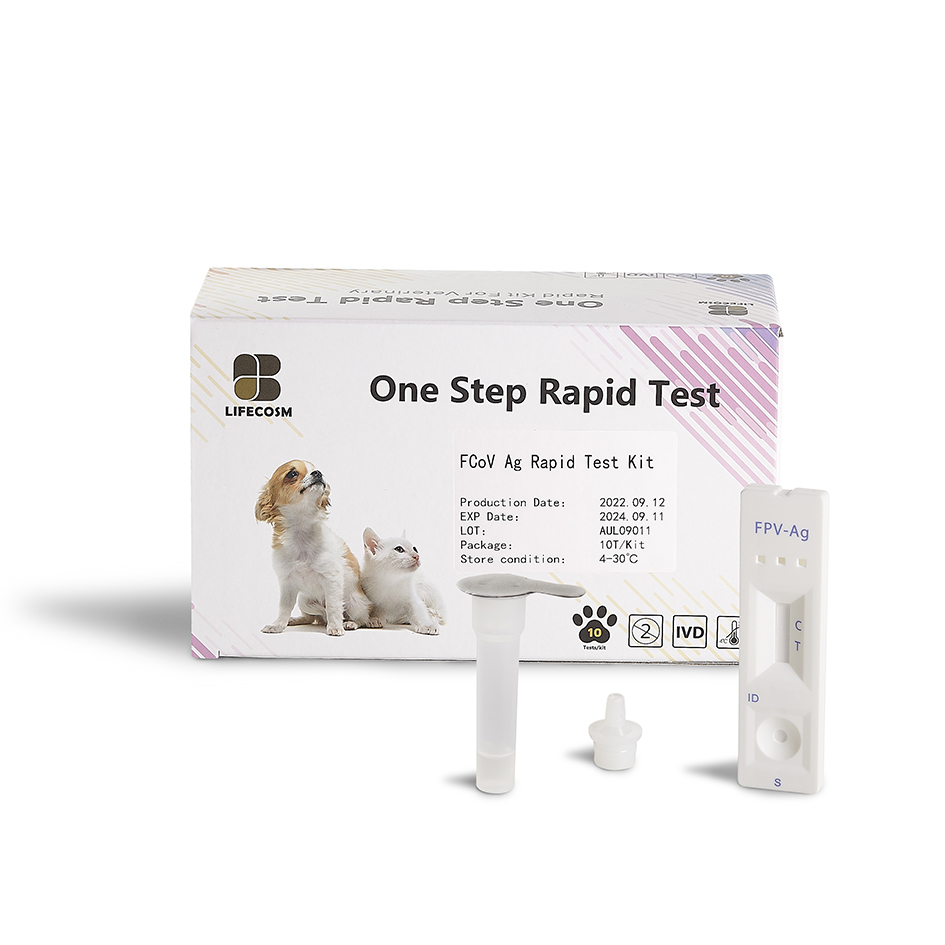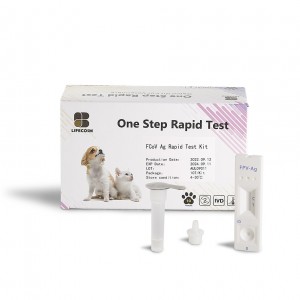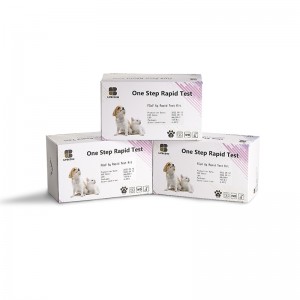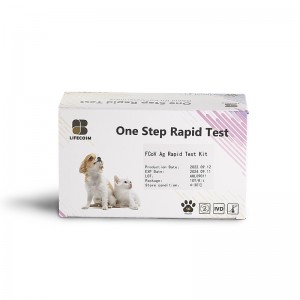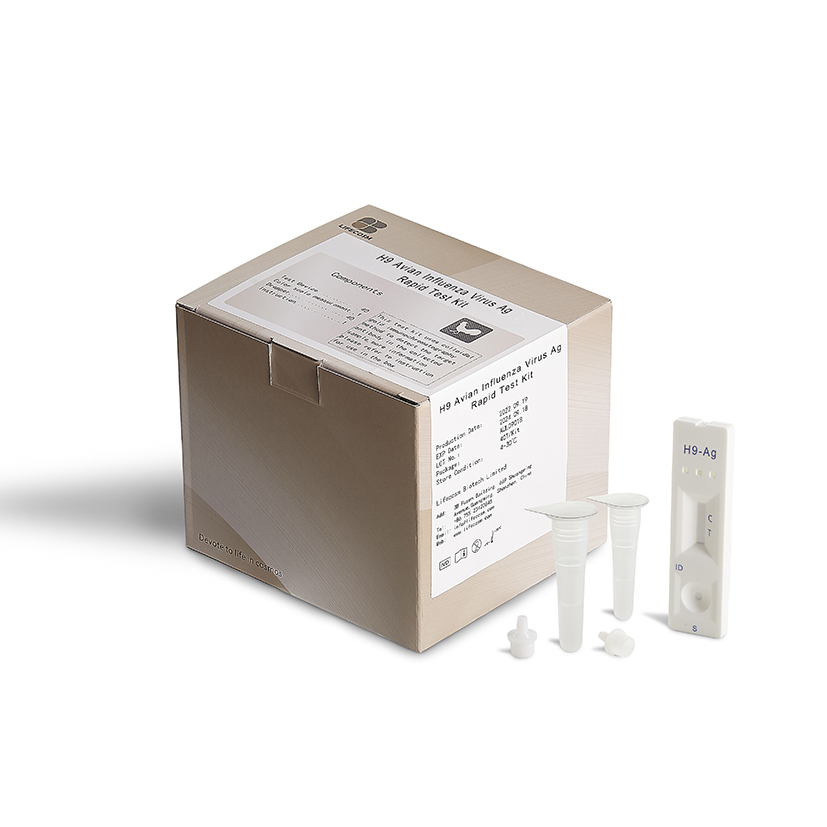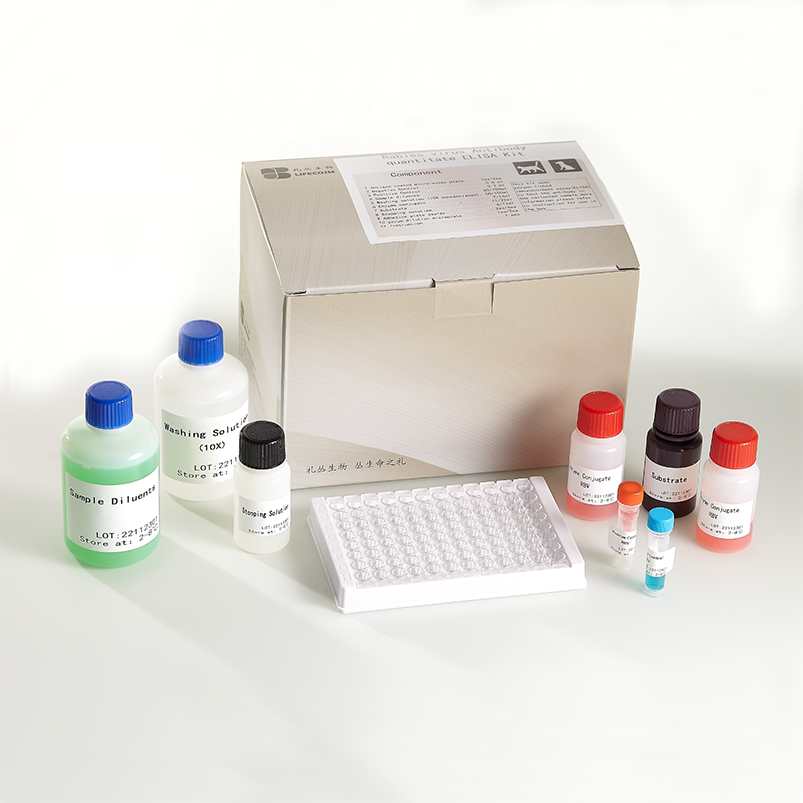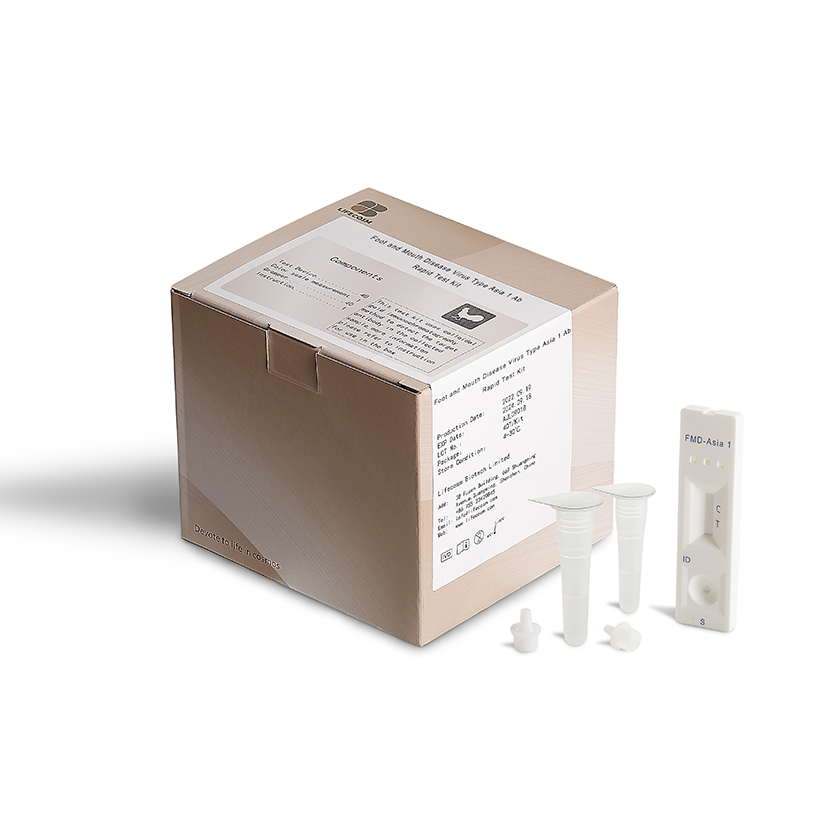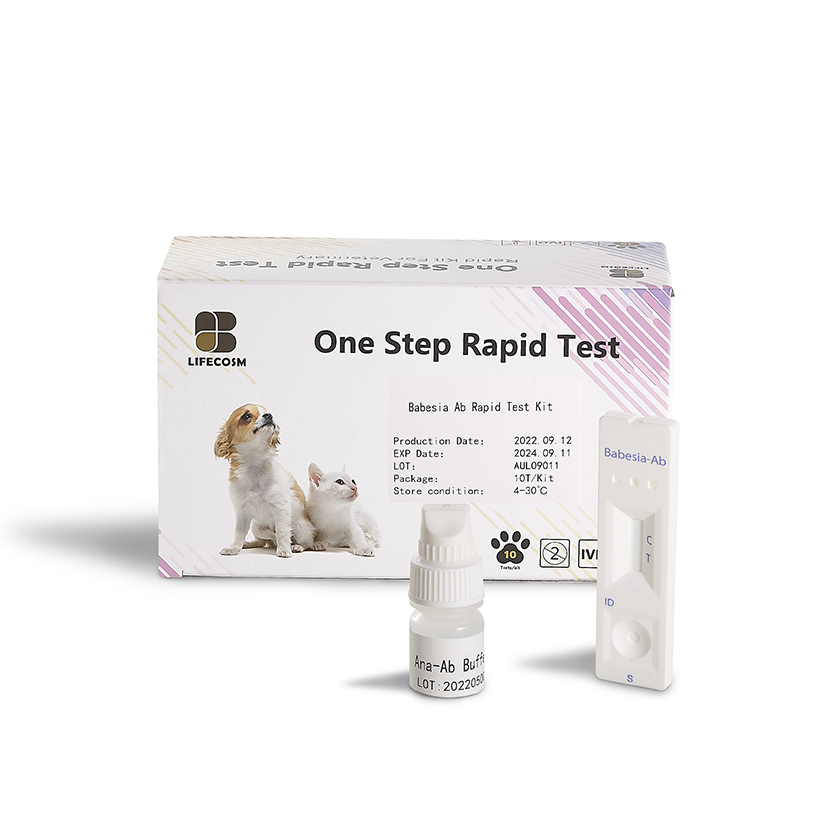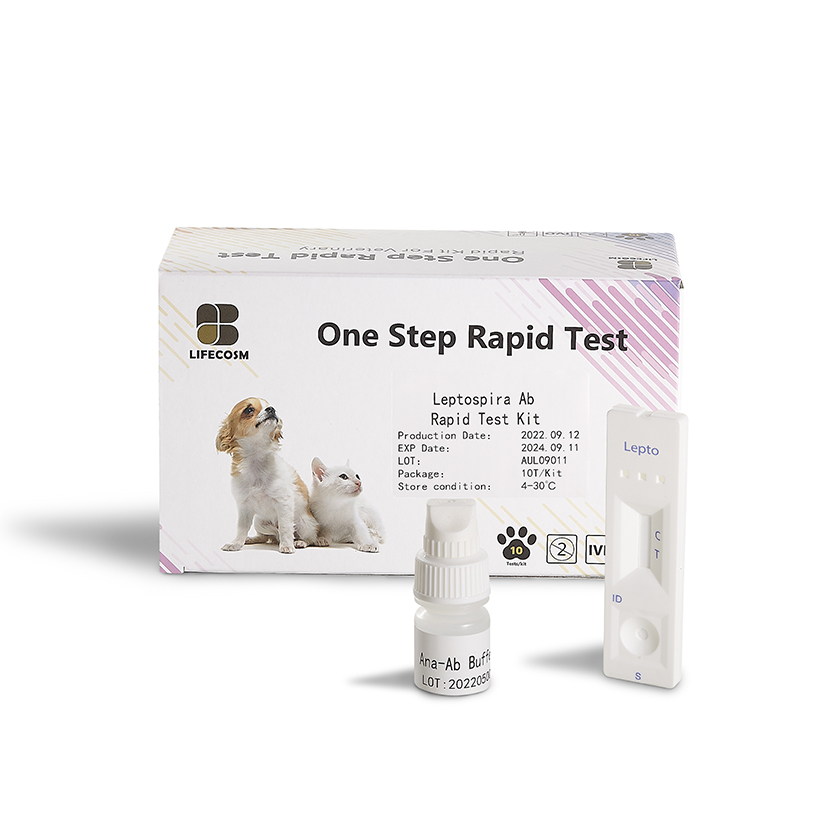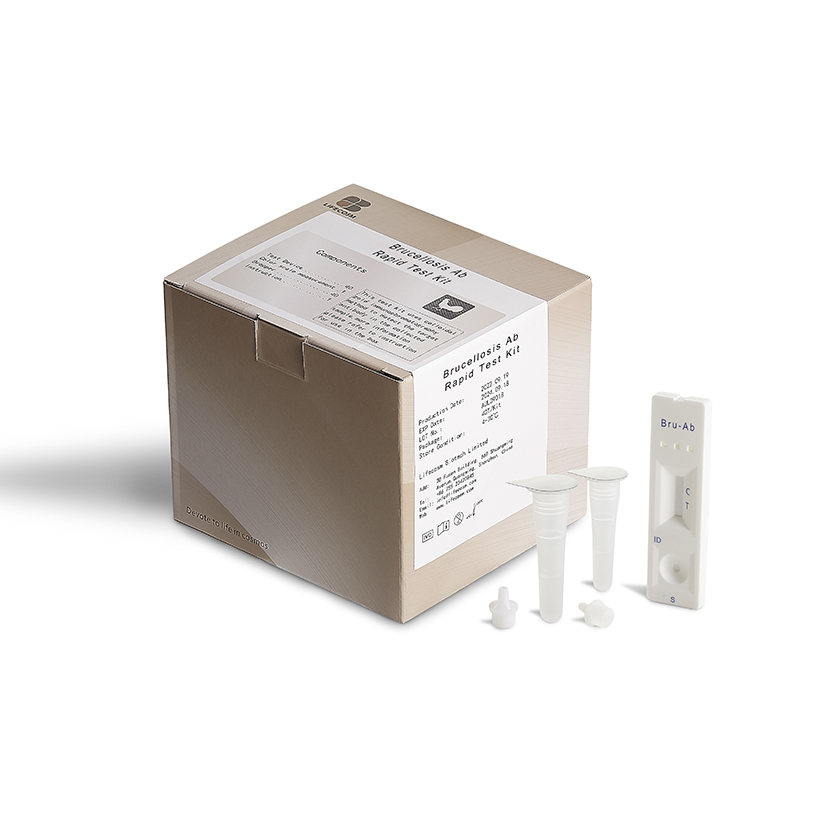
Products
Lifecosm FCoV Antigen rapid test kit
Fenine Coronavirus Ag Test Kit
| Catalog number | RC-CF17 |
| Summary | Detection of specific antigens of Fenine coronavirus within 15 minutes |
| Principle | One-step immunochromatographic assay |
| Detection Targets | Fenine Coronavirus antigens |
| Sample | Fenine Feces |
| Reading time | 10 ~ 15 minutes |
| Sensitivity | 95.0 % vs. RT-PCR |
| Specificity | 100.0 % vs. RT-PCR |
| Quantity | 1 box (kit) = 10 devices (Individual packing) |
| Contents | Test kit, Buffer tubes, Disposable droppers, and Cotton swabs |
| Storage | Room Temperature (at 2 ~ 30℃) |
| Expiration | 24 months after manufacturing |
|
Caution |
Use within 10 minutes after openingUse appropriate amount of sample (0.1 ml of a dropper)
Use after 15~30 minutes at RT if they are stored under cold circumstances Consider the test results as invalid after 10 minutes |
Information
Fenine Coronavirus (FCoV) is a virus that affects the intestinal tract of Cats. It causes a gastroenteritis similar to parvo. FCoV is the second leading viral cause of diarrhea in Cats with canine Parvovirus (CPV) being the leader. Unlike CPV, FCoV infections are not generally associated with high death rates. .
FCoV is a single stranded RNA type of virus with a fatty protective coating. Because the virus is covered in a fatty membrane, it is relatively easily inactivated with detergent and solvent-type disinfectants. It is spread by virus shedding in the feces of infected dogs. The most common route of infection is contact with fecal material containing the virus. Signs begin to show 1-5 days after exposure. The dog becomes a “carrier” for several weeks after recovery. The virus can live in the environment for several months. Clorox mixed at a rate of 4 ounces in a gallon of water will destroy the virus.
Symptoms
The primary symptom associated with FCoV is diarrhea. As with most infectious diseases, young puppies are more affected than adults. Unlike FPV, vomiting is not common. The diarrhea tends to be less profuse than that associated with FPV infections. The clinical signs of FCoV vary from mild and undetectable to severe and fatal. Most common signs include: depression, fever, loss of appetite, vomiting, and diarrhea. The diarrhea can be watery, yellowish-orange in color, bloody, mucoid, and usually has an offensive odor. Sudden death and abortions sometimes occur. The duration of illness can be anywhere from 2-10 days. Although FCoV is generally thought of as a milder cause of diarrhea than FPV, there is absolutely no way to differentiate the two without laboratory testing. Both FPV and FCoV cause the same appearing diarrhea with an identical odor. The diarrhea associated with FCoV usually lasts several days with low mortality. To complicate the diagnosis, many puppies with a severe intestinal upset (enteritis) are affected by both FCoV and FPV simultaneously. Mortality rates in puppies simultaneously infected may approach 90 percent
Treatment
As with Fenine FPV, there is no specific treatment for FCoV. It is very important to keep the patient, especially puppies, from developing dehydration. Water must be force fed or specially prepared fluids can be administered under the skin (subcutaneously) and/or intravenously to prevent dehydration. Vaccines are available to protect puppies and adults of all ages against FCoV. In areas where FCoV is prevalent, dogs and puppies should remain current on FCoV vaccinations beginning at or about six weeks of age. Sanitation with commercial disinfectants is highly effective and should be practiced in breeding, grooming, kennel housing, and hospital situations.
Prevention
Avoiding dog to dog contact or contact with objects that are contaminated with the virus prevents infection. Crowding, dirty facilities, grouping large numbers of dogs, and all types of stress make outbreaks of this disease more likely. Enteric Coronavirus are moderately stabile in heat acids and disinfectants but not nearly so much as Parvovirus.

